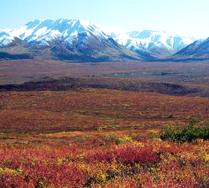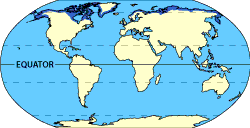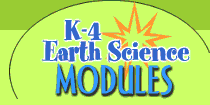Topic Overview: Tundra
 The tundra is the coldest biome on Earth. There is little rain or snow in the tundra. Very few plants can grow in this cold, dry place. The tundra is the coldest biome on Earth. There is little rain or snow in the tundra. Very few plants can grow in this cold, dry place.
Berkeley's Biomes group divides the tundra into two main groups. They are the arctic tundra and the alpine tundra.
The arctic tundra is located in the most northern part of the world. It covers the North Pole. It spreads south of the boreal forests. The arctic tundra is very cold. It is cold because it is far north of the equator. Much of the ground there is permanently frozen. This ground is called permafrost. Water from rain and melted snow cannot soak into the permafrost. A lot of the water just collects at the ground's surface. There it forms bogs and ponds.

In the arctic tundra, there is not much loose soil or water in the ground. Plants with long roots cannot grow there. Therefore, there are no trees in the arctic tundra. It is a cold, dry, windy plain. The plants that live in this biome grow close together in clumps. This helps them to avoid the cold air. They also grow close to the ground. This helps them to avoid the strong winds. Common arctic plants include grasses, mosses, and shrubs. Animals live in the arctic tundra too. They have extra fat to keep them warm. Many of them survive the winter by hibernating. They sleep through the long, cold winter when there is not much food. Some animals just migrate for the winter. They move south to warmer areas. Animals that live in the arctic tundra include caribou, arctic hares, and polar bears.
The alpine tundra can be found in many countries around the world. This biome is located on the tops of high mountains. The alpine tundra is a lot like the arctic tundra. It is very cold and windy. The main difference between the two tundra is why each is cold. The alpine tundra is cold because it is so high above Earth's surface.
The alpine tundra has no trees. It has grasses and shrubs like the arctic tundra. Animals such as mountain goats and elk live high in the alpine tundra. Photo © 2000-2003 www.clipart.com |











